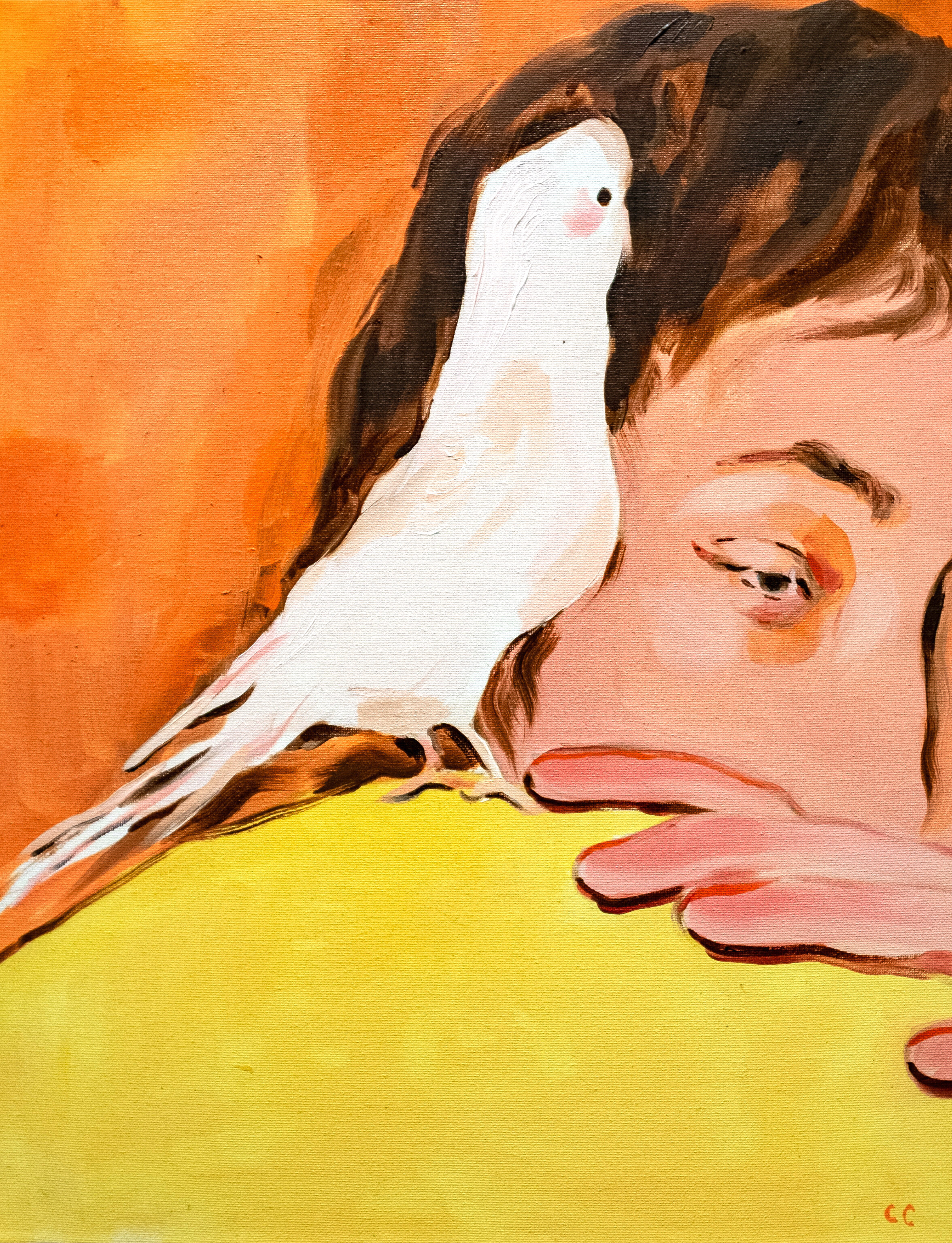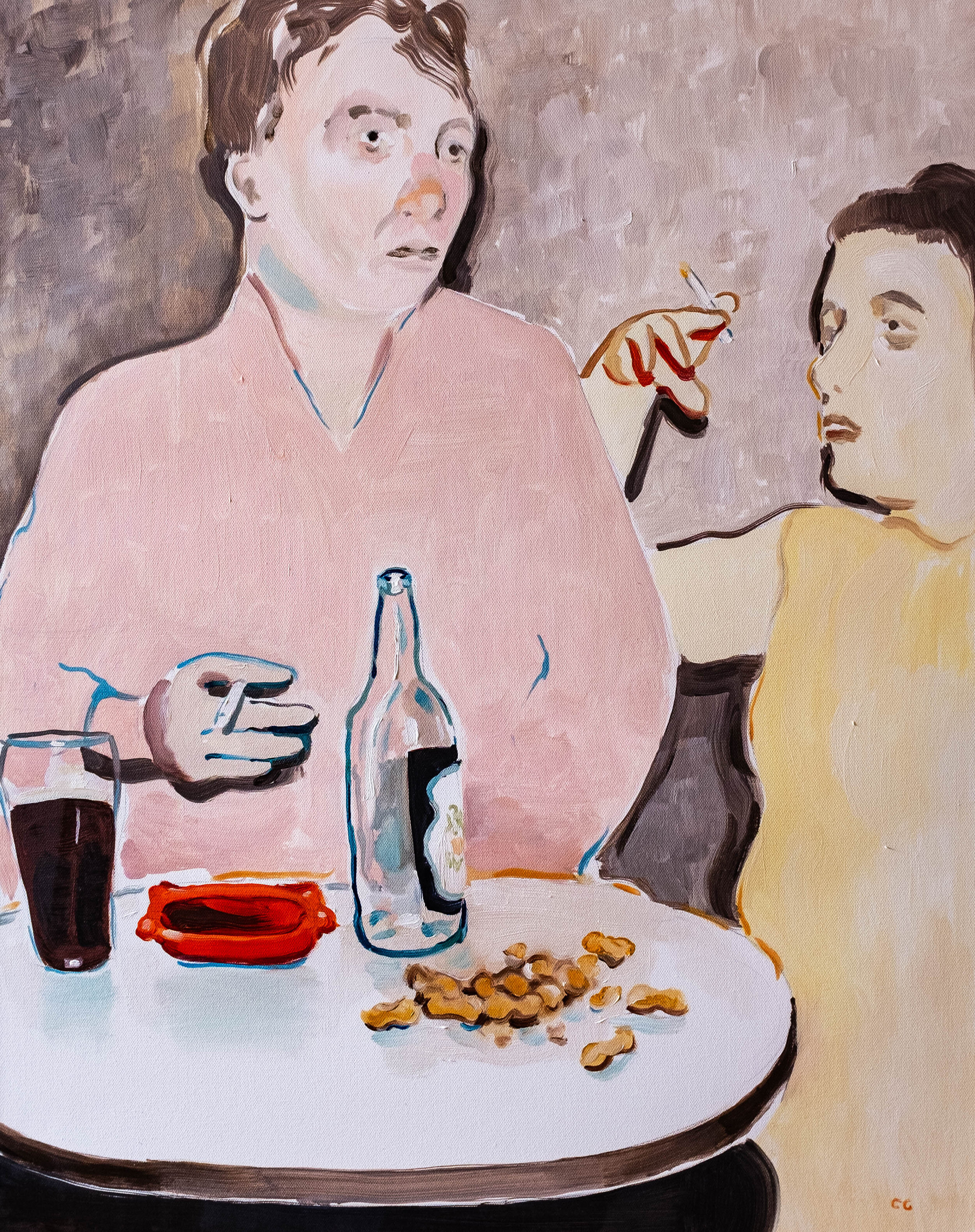Looking Forward while Looking Back:
Speculative Interiors
Curated by Elisa Gutiérrez Eriksen
May 29 - June 18, 2020
The new iteration of Looking Forward while Looking Back: Speculative Interiors, presents the works of NARS Alumni Alina Grasmann, Cathleen Clarke and Matthew Cronin.
What does memory mixed with visual archives become when these are constantly revisited in an effort to reconstruct a narrative?
The works of Cronin, Grasmann and Clarke become familiar, yet strange. They change, expand, and transform into a distant interior –stuck in impermanence.
As these artists converge, a dialogue connecting painting and photography arises. Their aesthetic qualities live in a threshold between a formal language and a vaguely kin fiction that triggers a synapse within the memories of the observer as it enters into a collective speculative interior.
From images from childhood to iconic events or places inserted in quotidian landscapes, interpretations of objects and images from old catalogues, these works redefine the meaning and feeling of an old souvenir, and capture the passage of time by mixing what was once with what could be. They can be seen as eternal moments where time and place become subjective segments, connected to a story that rises from an eternal interior place, stuck in memory.
While reconstructing a present –and even projecting a possible future– the works in this exhibition live in a multiplicity of dimensions. Places become content and the content becomes a place.*
*Emanuele Coccia, The Life of Plants
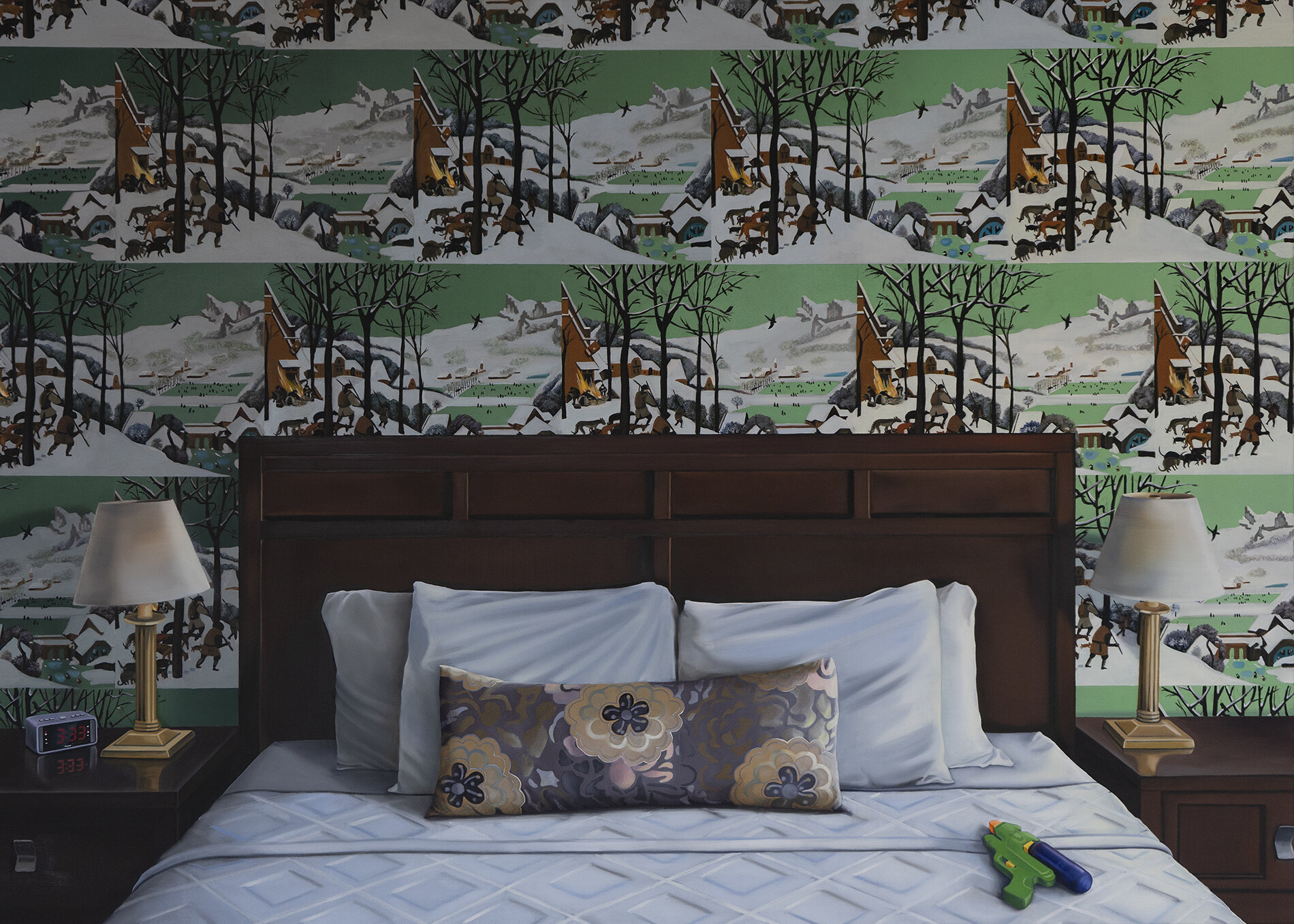
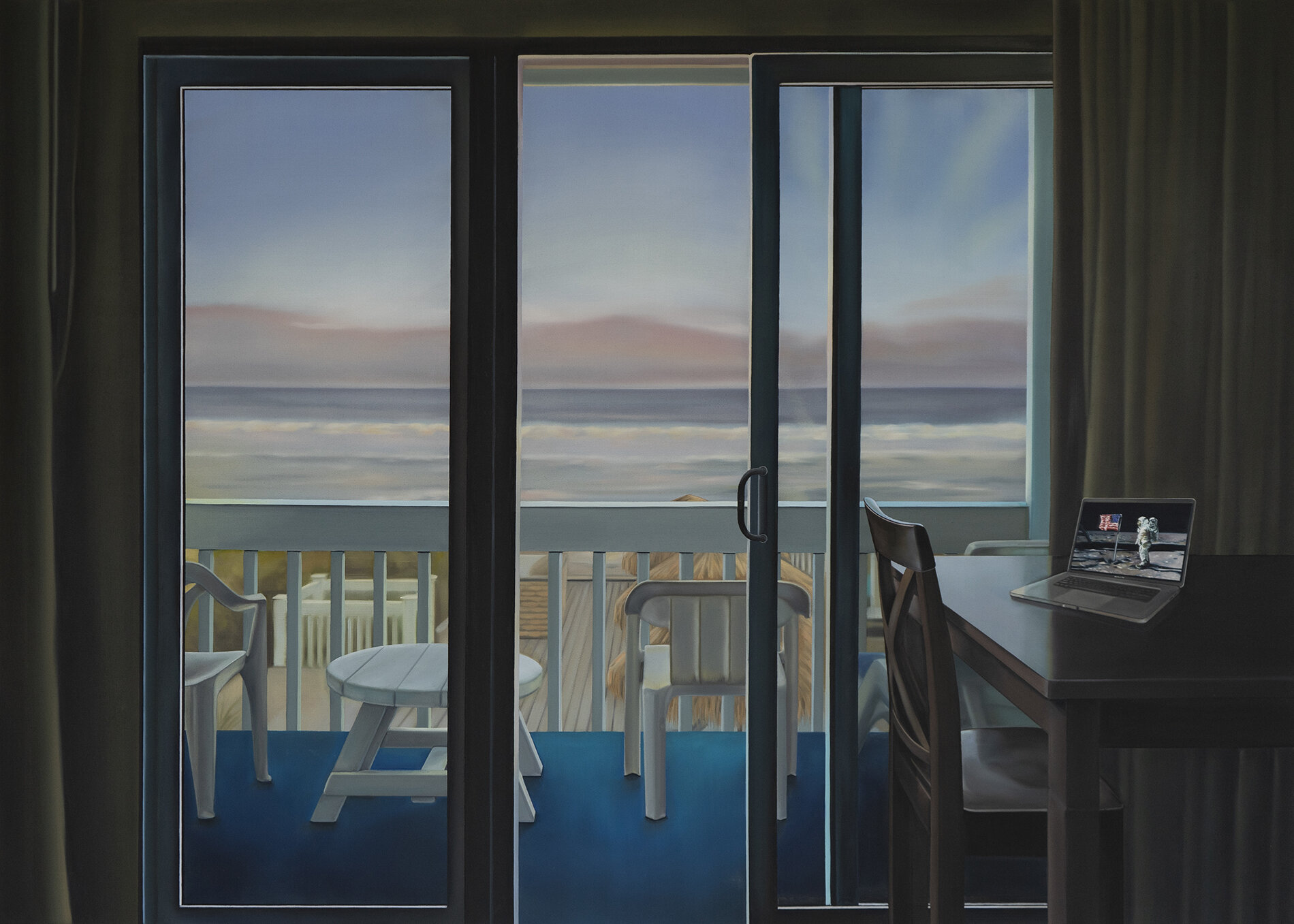
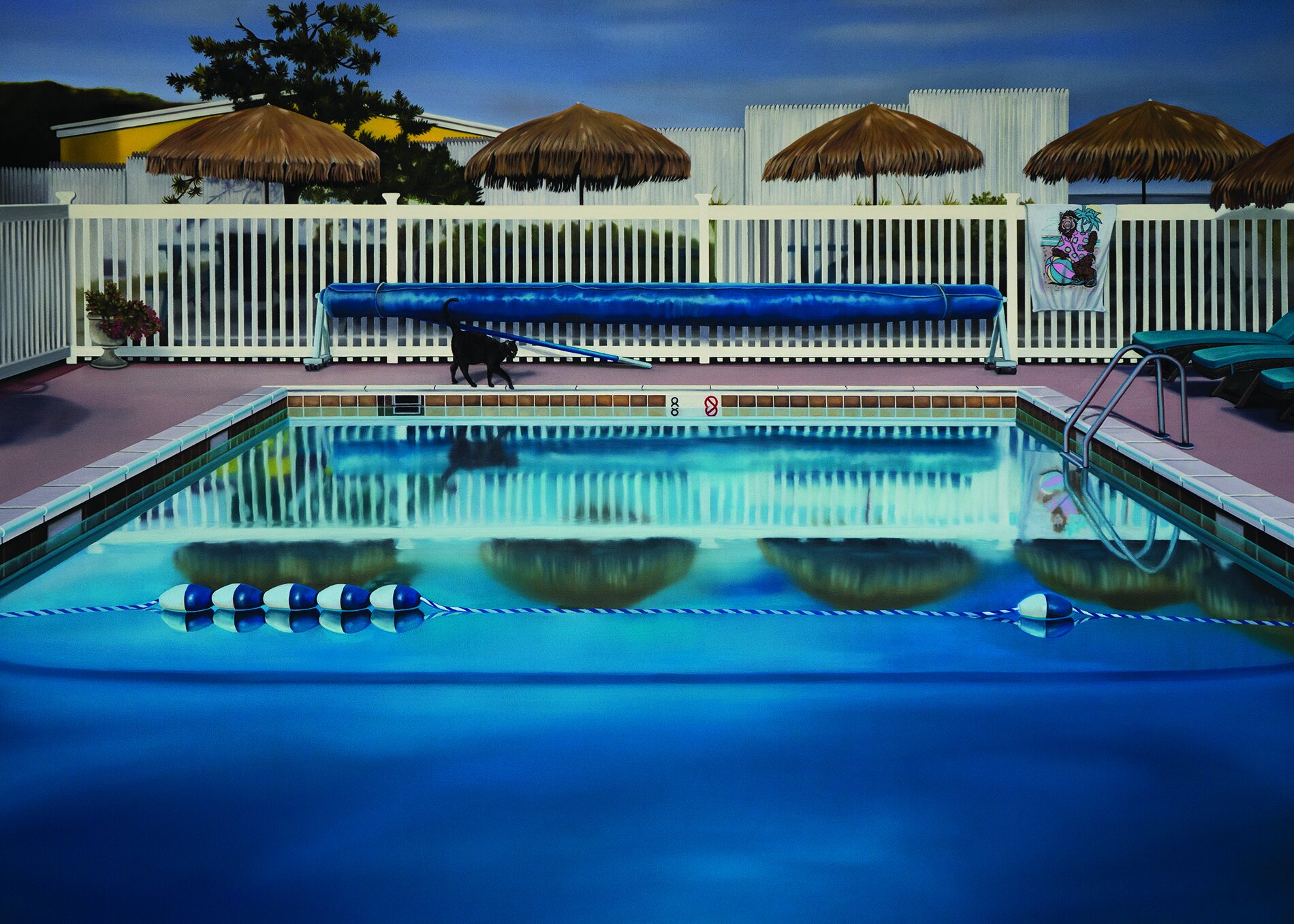
Alina Grasmann (Germany)
NARS Alumni, 2017 Season IV
@alina_anila
Alina's paintings almost look like photos. They are very precise and detailed. The light on the walls or the reflection in the pool for example are carefully painted. You could nearly believe that they are exact replicas of the original photos. But something seems off. Sometimes you can notice that light and shadows don't fit together. And the wallpaper with the painting of Breugel – is it really there or was it added by the artist? Alina's work always lies on the boundary between fact and fiction. Traditionally, a photo is considered a true document. In contrast, paintings are viewed as fiction - composed, manipulated, unreal.
They're not real, they're made up. But the unstoppable development of digital media has changed this difference between photography and painting. CGI enables the creation of previously unthinkable realistic fantasy worlds. Alina brings this new aspect of the photo - its capacity for the fictional - back into painting. Her paintings are almost theater-like. They invite us to come in and stay in them.
(M. Wisniowska)
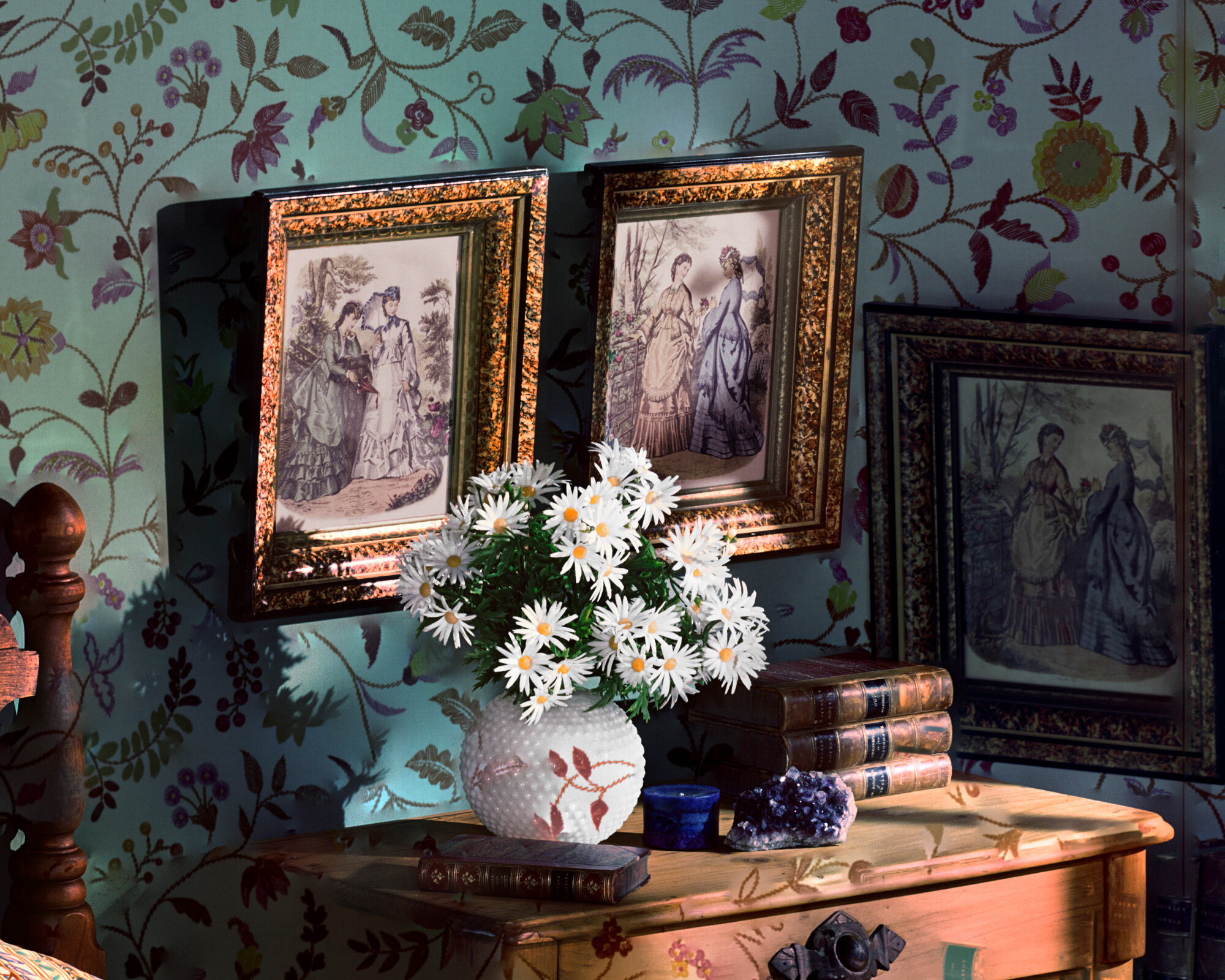
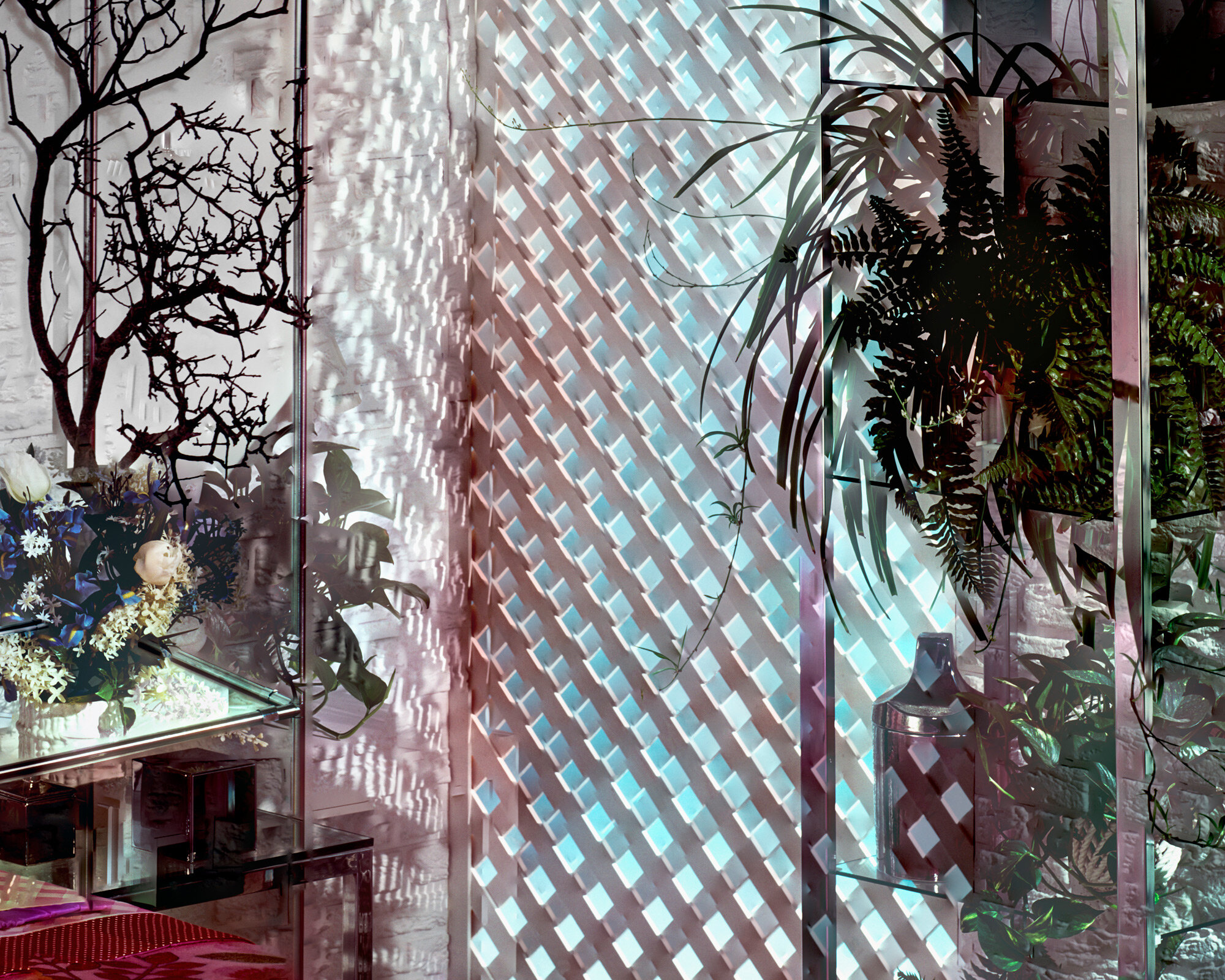
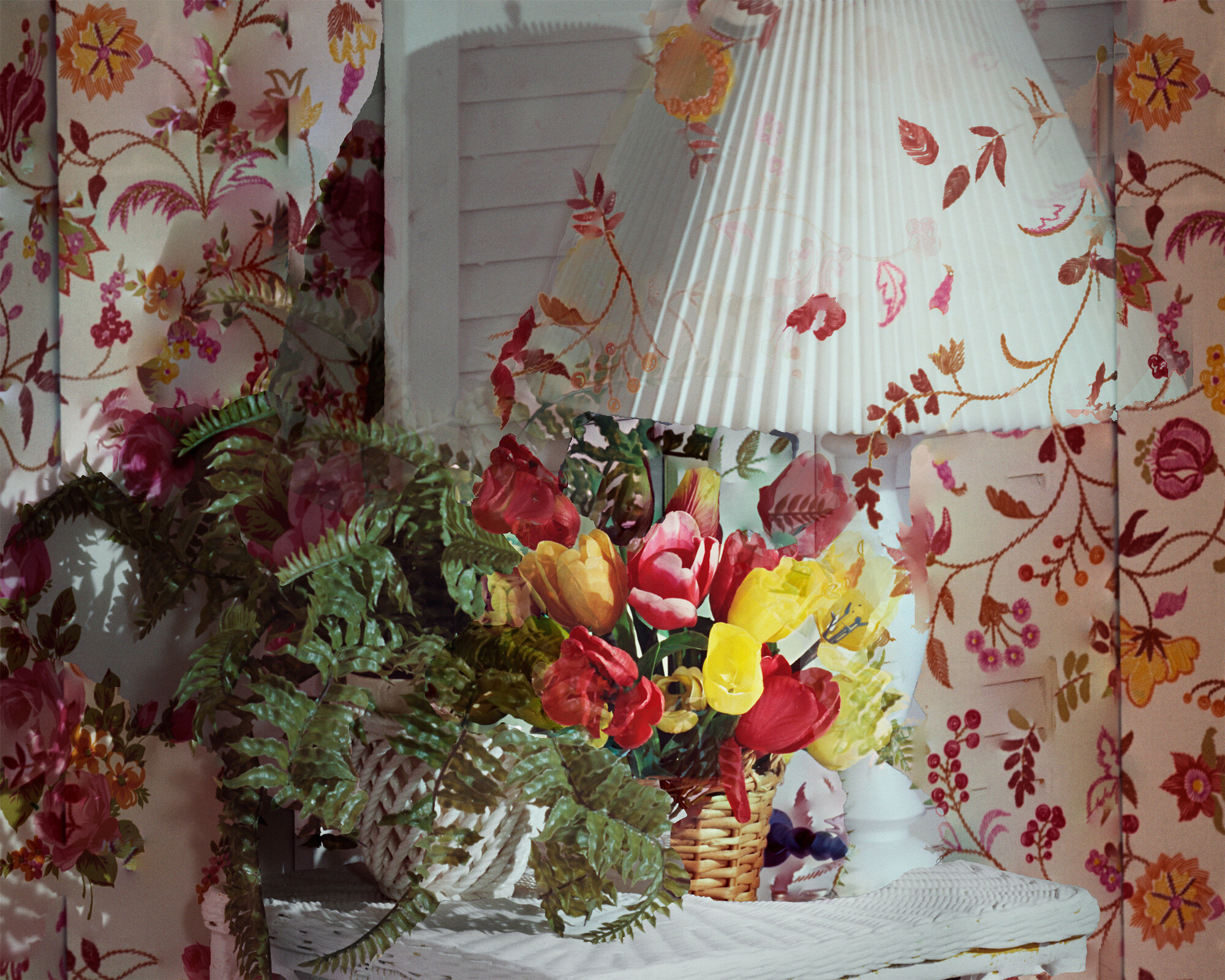

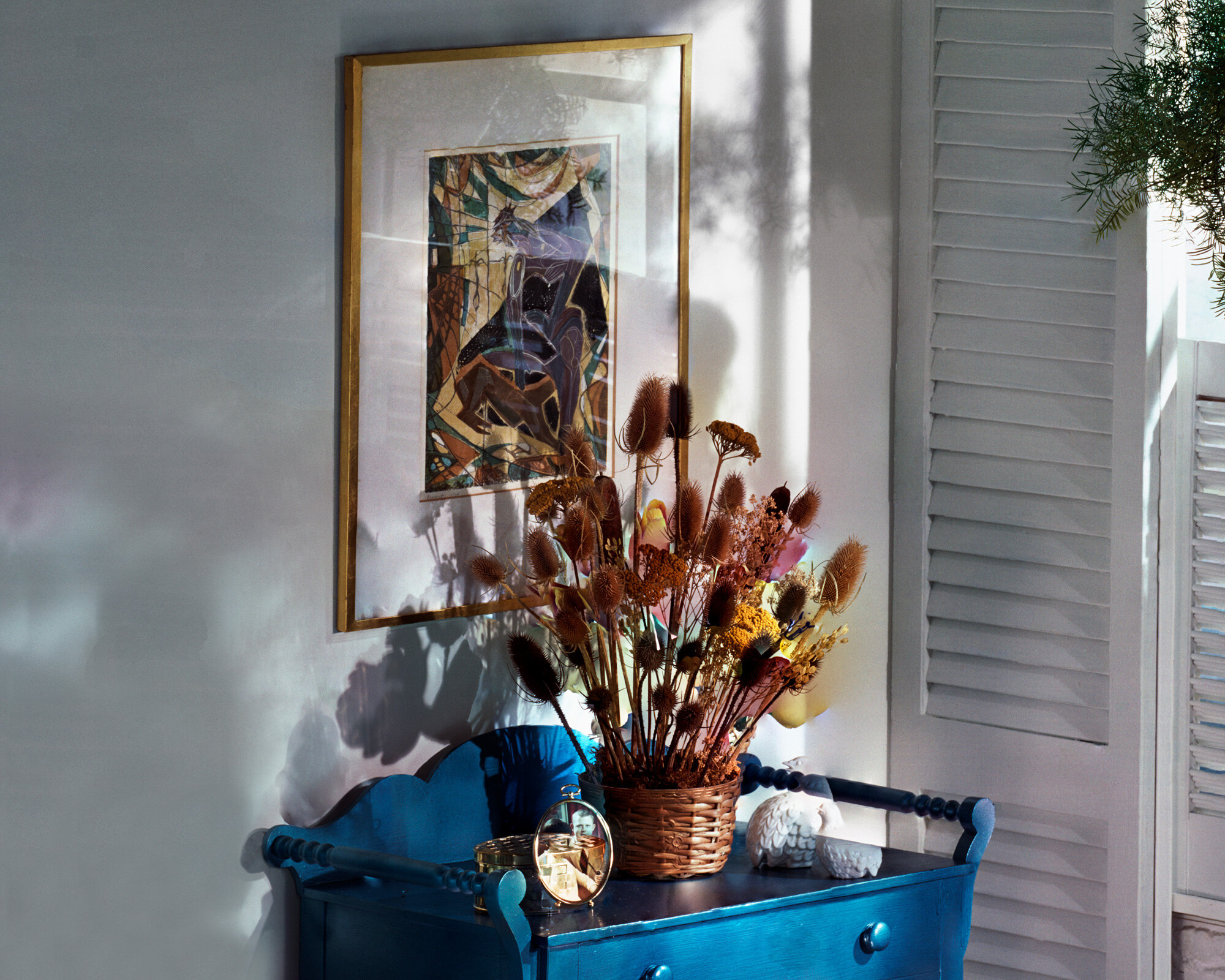
Matthew Cronin (USA)
NARS Alumni, 2020 Season I
@matthewcroninstudio
Matthew Cronin is an artist living and working in Brooklyn, New York. His process makes use of pre-existing imagery which he reimagines through montage and multiple exposure. For the series “Dwelling”, Cronin transforms photographs produced during the 1970s for J.C. Penny Catalogs. He creates new, speculative interiors that explore the relationships between comfort, class, and tradition.
Cronin holds an MFA in Studio art from the University of Texas at Austin as well as a BFA in Photography from Massachusetts College of Art and Design. In 2020, he participated in the NARS Foundation's Winter Residency.
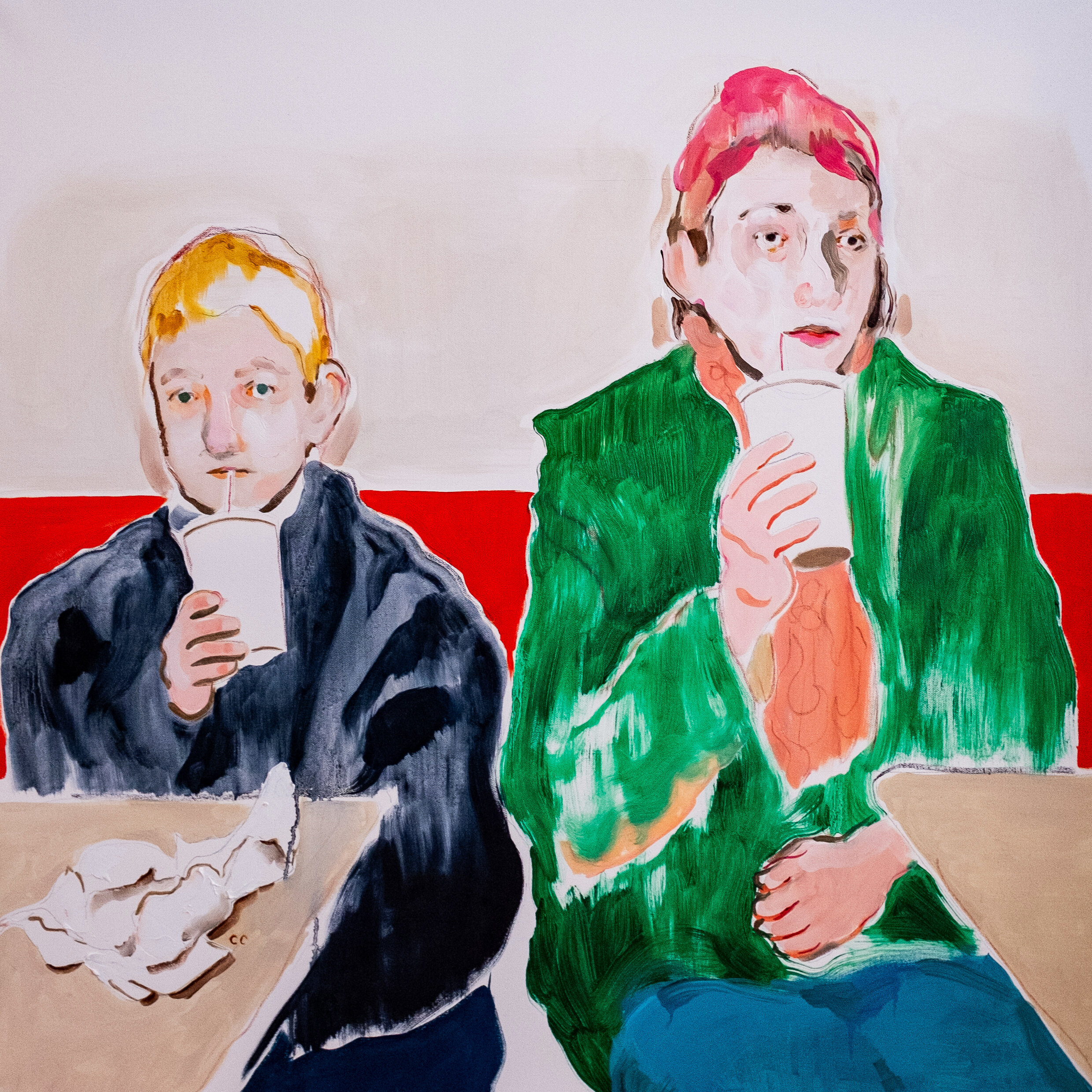
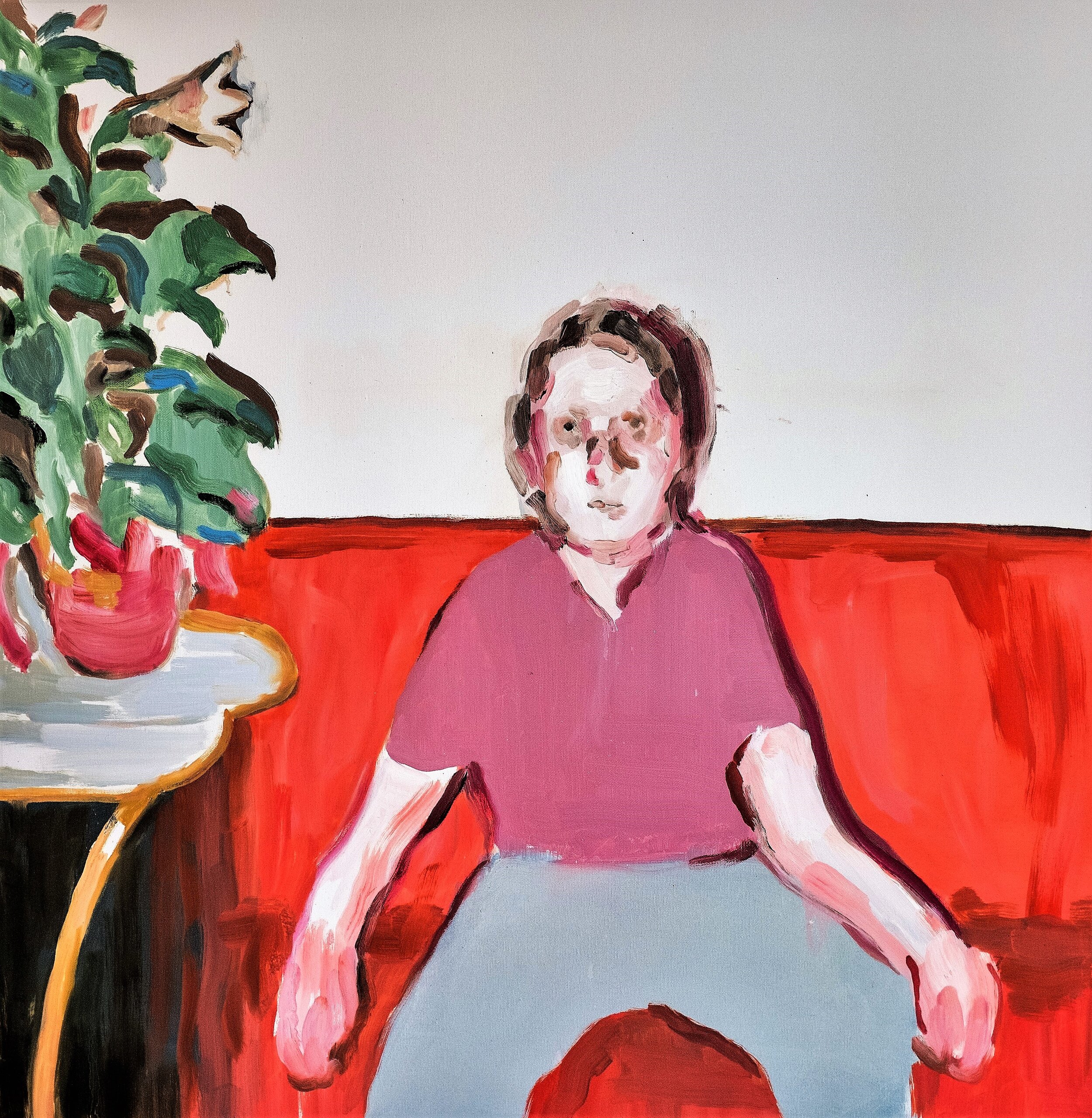
Cathleen Clarke (USA)
NARS Alumni, 2019 Season I
@cathleenclarke
Inspired by childhood and the enigmas that surround it, Clarke’s work explores themes of memory, mystery, and the passing of time. The figures in her paintings appear distant, confronting the viewer as if from another time. Sometimes isolated, these individuals are absorbed into their backgrounds, evoking the anxiety of being controlled by one's surroundings. Referencing old family photos, childhood memories and found images, Clarke allows the paint to interpret what is often overlooked or forgotten. In this way, the reference becomes a small piece in her process, and the end result is the memory and feeling she has from it.
Download Press Release
2017, Season IV
@alina_anila
Can you tell us a bit more about the process for creating the work presented in this exhibition?
"The Montauk Project" is a series of 15 oil paintings, which I have painted in my studio in Munich from late 2018 to early 2020. The idea for this work however came to me already in the summer of 2016 during a stay in New York. I had read about the coastal town “Montauk” in the eponymous novel from 1975 by the Swiss author Max Frisch. Contrary to the descriptions in the book, the place then seemed very touristy and crowded to me. Before I started my residency at NARS, I visited the place again in fall 2017 - this time not during the tourist season, which made it very easy for me to get involved in this literary place.
Max Frisch’s book appears as a fictional narrative, but actually it certainly is a factual report. It tells the story of a weekend trip to Montauk Frisch made with a young American woman from his New York publishing house. I think the playful way he deals with reality and fiction in his book was the trigger and also remained the guide for my series.
I want to show sceneries from Montauk that could be like that, but don't have to be that way. I want to open a space for the viewer with my paintings in which he can always be somewhere between fiction and reality.
How are you doing these days? Is your artwork being influenced by or providing an outlet from the current quarantine?
Certainly the circumstances were not as difficult for me as they might have been for others. My daily routine is to work alone in my studio anyway but the quarantine situation had no direct influence on the topics of my work. I was also told that I am probably least at risk of getting infected of all people here in Munich because being self quarantined is my everyday life :)
But seriously, of course I did miss my friends and family. That was particularly bad during the lockdown. But there are already some easing of the restrictions here and it at least feels like we’re slowly getting back to normal.
It is more difficult for me to accept the uncertainties and the fact that the next time cannot be planned at the moment. I actually wanted to go back to the US for a few months in October this year, aiming to discover new places and to travel a bit. I'm now trying to learn to give up control. I think it's a very important process for me.
Can you speak about your influences as an artist?
As a painter, everything that surrounds me and with what I surround myself probably inspires and influences me in some unconscious way. At the moment it is mainly places in the US that touch me so much that I already decide in the moment I visit them to devote a whole series to them.
This might probably be because of the feeling of familiarity that American urban landscapes trigger in me. Despite all the differences to the European environment in which I live in, despite the fact that I actually am a foreigner when I travel in the states and despite being far away from home, I don't feel the US is a very foreign
place to me or to anyone else from the western world. It is a strange, in-between feeling that you have as an European in the US, having grown up in an Americanized western world, having read american books and having consumed american movies since early childhood.
So I would say that probably films and literature have a major impact on the mood in my work.
What is your dream project?
This is easy. My dream project is actually always the project I'm currently working on. I have just started a new series on Paolo Soleri's experimental town Arcosanti in the desert of Arizona. Four large-format works from this series are to be shown at Fridman Gallery in NYC this November - on the condition, of course, that the situation calms down somewhat worldwide.
Season I, 2020
@matthewcroninstudio
Can you tell us a bit more about the process for creating the work presented in this exhibition?
My process is centered around the reinterpretation of preexisting imagery. For the pictures included in this exhibition I have been working with photographs commissioned by J.C. Penny during the 1970s for use in their catalog. I begin by making high resolution scans of the source photographs. I then layer multiple scans on top of one another and digitally montage them together.
The montaging process is pretty intuitive and involves a lot of trial and error. With each attempt I find little moments in the composition that seem to work, like the way different bed sheets merge together, and I’ll try to hold on to them. After dozens of attempts I will have incorporated those moments into a single picture. At this stage the picture looks super messy and chaotic so I will recover elements from the source images. Essentially blending the strangeness of montage with the familiarity of the advertisement.
How are you doing these days? Is your artwork being influenced by or providing an outlet from the current quarantine?
All things considered I am doing pretty well. Being able to work in the studio has been a saving grace during this. However, making new pieces has been pretty difficult. So, I have really focused on experimentation. Right now I don’t have the pressure to make things that are resolved. I am free to fail, and it feels great!
I think it’s too early for me to understand how my practice is being shaped by the quarantine, but it has definitely magnified certain themes in my work.
Take the Dwelling pictures for example. On one level they have always been
about disrupting the perceived comfort of the home, but now that aspect has taken on more importance. I keep thinking back to the history of the word “disease” and how its original meaning didn’t refer to illness, but rather being uncomfortable. It just seems so relevant to these pictures.
Can you speak about your influences as an artist?
My influences come from all over. I have my visual influences that seem to find their way into my work. For the last few years I have been looking at a lot of German artists. Specifically, the photographers of the Dusseldorf school who studied under Bernd and Hilla Becher at the Kunstakademie.
Beyond the visual, I actually think my biggest influences come from music. It’s not something that can necessarily be seen in the final image but can definitely be felt in the process. I love composers like Terry Riley and Steve Reich. I am totally fascinated with their writing process and try to find the visual equivalates. I think a good example is their use of field recordings or tape loops. Both use found audio and find a way to transform it. I actually think about the two of them a lot when I am working with found imagery.
What is your dream project?
This is such a tough question and I am not sure if I can ever think of a dream project. In a perfect world I would have access to the entire archive of J.C. Penny photographs. I feel like that could really be amazing, but there is something nice about the challenge of having to work with the small collection that I have.
Whatever it is, I am sure it involves a giant collection of photographs that I can sift through…
2019, Season 1
@cathleenclarke
Can you tell us a bit more about the process for creating the work presented in this exhibition?
My process begins with searching for inspiration from my collection of old family photos or found images that catch my eye whether it be online, in books, movies, etc. Once I find an image that affects me in some way, I’ll take a closer look. I consider the subjects in the photo, what was happening in this photo, who is this person, do I want to continue this story onto my canvas or do I want to use this photo merely as a reference and create a completely new story with it? I might zoom into the image, crop it a certain way, decide to change the colors, and the end result is usually something completely different than where I began. I think that’s the wonderful thing about painting, it is the ability to tell a story that the human eye could not see otherwise.
How are you doing these days? Is your artwork being influenced by or providing an outlet from the current quarantine?
I’m doing ok. I have a full time job and I’m extremely fortunate to be able to continue working from home for the time being. My studio has always been just a corner of my apartment, so I’ve been able to continue painting as usual, although it’s a pain to find art supplies lately.
I’ve always found inspiration from solitude, and the quiet moments in everyday life. There’s a yearning that comes with looking at an old photo, of somewhere that seems far away, so being stuck in a small apartment for 3 months with all the solitude I need has only contributed more to my desire to paint.
Can you speak about your influences as an artist?
My biggest influence would be memories from my childhood, how unclear they are to look back on and how mysterious everything felt at that time, that idea really influences my work. I’m also really influenced by music, which is a necessity for me while painting. Musicians have a way of storytelling that I really admire.
What is your dream project?
I’ve thought about how cool it would be put on a show in an abandoned house out in the middle of nowhere. I spent my teenage years living in a small country town in northern Illinois, and there were a lot of abandoned houses, some that you could barely see because they were submerged in overgrown plants. There’s so many memories in these old houses, and I think it’d be great to bring one back to life for just a little bit.

